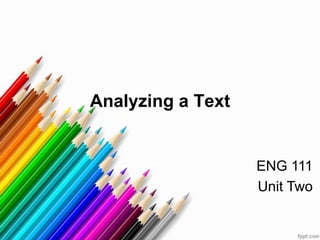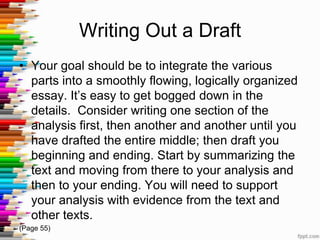This document provides guidance on analyzing texts. It discusses reading texts carefully and considering the context, purpose, and arguments made. The key aspects of textual analysis are summarizing the text, interpreting it based on evidence and reasoning, and relating it to larger issues. Analyses can be organized thematically or by examining each part separately. Close reading, annotating, outlining ideas, and revising are important for developing a clear and well-supported analysis.






























